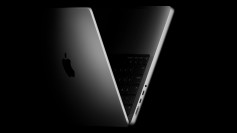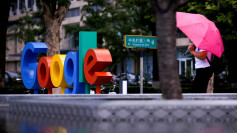Apple is set to introduce a new ultra-thin bezel technology in the upcoming iPhone 16 series, aiming to maximize the display size while maintaining a manageable form factor, according to a recent report from Korea's Sisa Journal. The Border Reduction Structure (BRS) technology will be applied to all four iPhone 16 models, scheduled for release in the second half of this year, and will significantly reduce the bezel size at the bottom of the display by compacting the internal copper wiring.
The Cupertino-based tech giant has previously attempted to implement BRS technology in iPhones but faced challenges due to heat dissipation issues. However, recent advancements in heat dissipation technology have reportedly enabled Apple to overcome these hurdles and move forward with the borderless display design.
The iPhone 16 Pro models are expected to feature notably larger display sizes compared to their iPhone 15 Pro counterparts. According to multiple sources, the iPhone 16 Pro will sport a 6.27-inch display (159.31 mm), while the iPhone 16 Pro Max will boast a 6.85-inch (174.06 mm) screen. Apple is likely to market these sizes as 6.3 inches and 6.9 inches, respectively.
With the increase in display size, the dimensions of the iPhone's body will also grow slightly. The iPhone 16 Pro and 16 Pro Max will be marginally taller and wider than their predecessors, providing more internal space for components such as larger, longer-lasting batteries. However, the iPhone 16 and iPhone 16 Plus are not expected to undergo size changes and will retain the same dimensions as the iPhone 15 and iPhone 15 Plus.
"Apple wants to change the shape of the display once again by hiding the camera behind the display or hiding the face ID, but UDC technology continues to slow down," said Kang Min-soo, a senior researcher at Omdia. "It was originally planned to launch this year, but it was delayed to next year, and now it could be delayed until 2026 and beyond 2027."
Apple's long-term goal is to create a nearly bezel-free "single slab of glass" design, as envisioned by former Apple design chief Jony Ive. This would involve concealing both the Face ID module and the selfie camera beneath the display. While the selfie camera poses a more significant challenge due to potential compromises in photo quality, embedding the infrared camera and sensor for Face ID is considered more feasible and is expected to happen first.
The report suggests that Apple could achieve under-display Face ID as early as 2026, although it quickly hedges on this prediction, acknowledging the possibility of further delays. The under-display camera (UDC) technology has been a stumbling block, causing Apple to push back its original plans for implementation.






